The Texas speckled trout fishery is in for historic changes due to lingering effects of the severe winter storm in February 2021 that killed millions of different fish overall.
The Texas Parks and Wildlife Commission in late January adopted proposals reducing the slot limit and daily bag from the Matagorda Bay system all the way down the coast to the Mexican border. The new trout regulations setting a 17- to 23-inch slot limit with no keeping of oversize fish and changing the daily bag to three fish will include the Upper and Lower Laguna Madre, as well as Corpus Christi Bay, Aransas Bay and San Antonio Bay, in addition to Matagorda. The regulations also will be in effect 500 yards off the beach into the Gulf of Mexico in those areas.
The new frameworks are set to go into effect on March 16, 2022.
The previous trout regulations across the entire Texas coast featured a 15- to 25-inch slot and the ability to keep one fish over 25 inches as part of a five-fish daily bag.
These new regulations mimic the action taken in the Laguna after the freeze. The initial fish kill assessment estimated 160,000 trout died — mostly in the Laguna — though TPWD acknowledges its estimates are done on the “low end.”
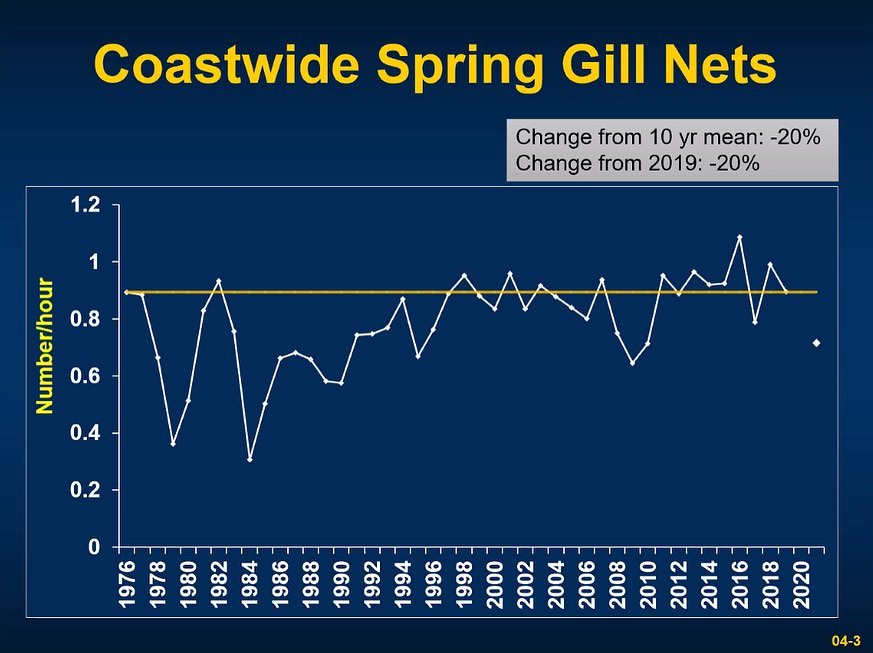
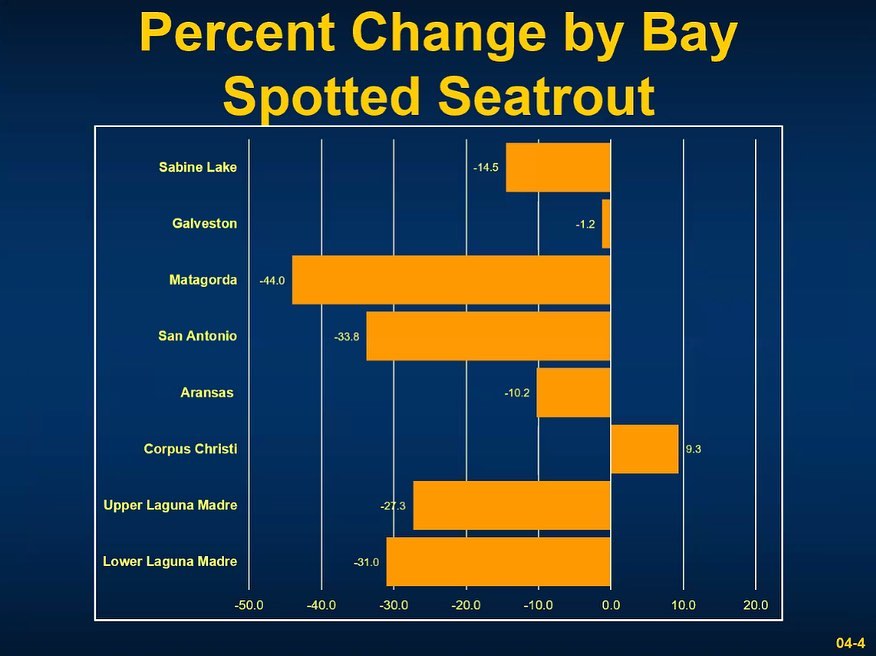
Changes to fishing regulations are typically done at the March Commission meeting, and if approved, go into effect beginning in September during the next license year. These trout proposals were based on wanting to get them enacted ahead of spawning season that begins in late spring in the areas affected by the freeze.
The subsequent adoption would allow multiple spawning seasons under the new regs, and after that time, all data gleaned will be used in future fisheries management decisions. The regulations will sunset and would need to be revisited in August 2023.
Fisheries officials and biologists rely heavily on gillnet surveys to estimate trout populations across multiple bay systems, and the numbers from the most recent surveys showed sharp downward trends in almost every bay:
- The Lower Laguna Madre was down about 31%
- The Upper Laguna Madre was down about 27%
- Aransas Bay was down about 10%
- San Antonio Bay was down about 34%
- Matagorda Bay was down about 44%
- Galveston Bay was down about 1%
- Sabine Lake was down about 14%
The only bay system that was up was Corpus Christi Bay at about 9% above the 10-year gillnet average. That bay is a deeper system than other bodies of water on the Texas coast and biologists think that aided in more fish moving into those waters during the freeze, causing the rise in that specific figure. Corpus Christi Bay was put in the new regs due to a concern over increased fishing pressure — meaning folks might target the bay more if it wasn’t included, officials noted.
TPWD also cited movement of fish between adjoining bay systems and “genetic connectivity that should help restore populations across all of them.”
There also is the enforcement impact of the new regs, and out of ease of helping game wardens be able to adequately enforce the new trout regulations, the proposal encapsulates the area from the Mexican border up to Farm-to-Market Road 457 just north of Matagorda Bay.
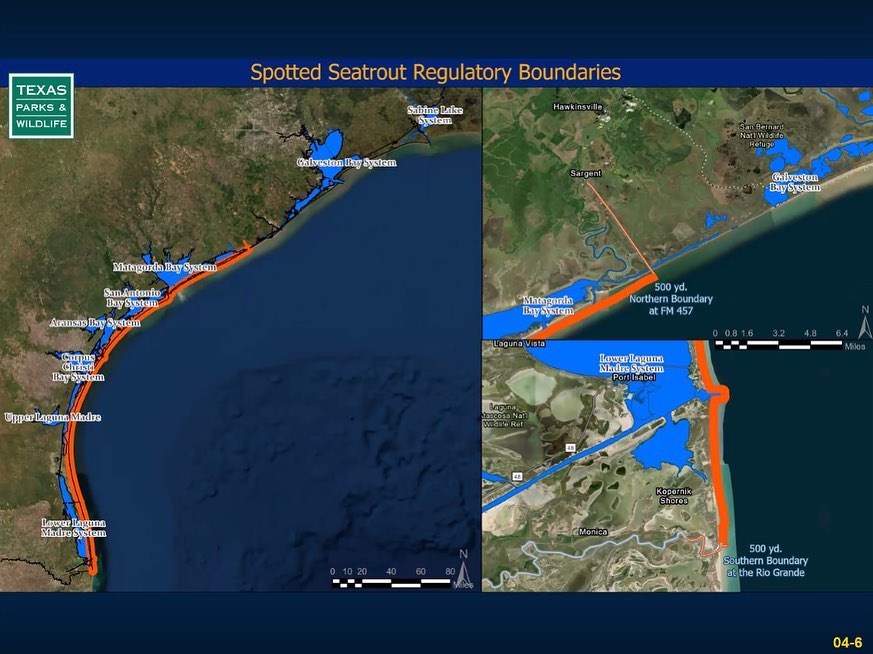
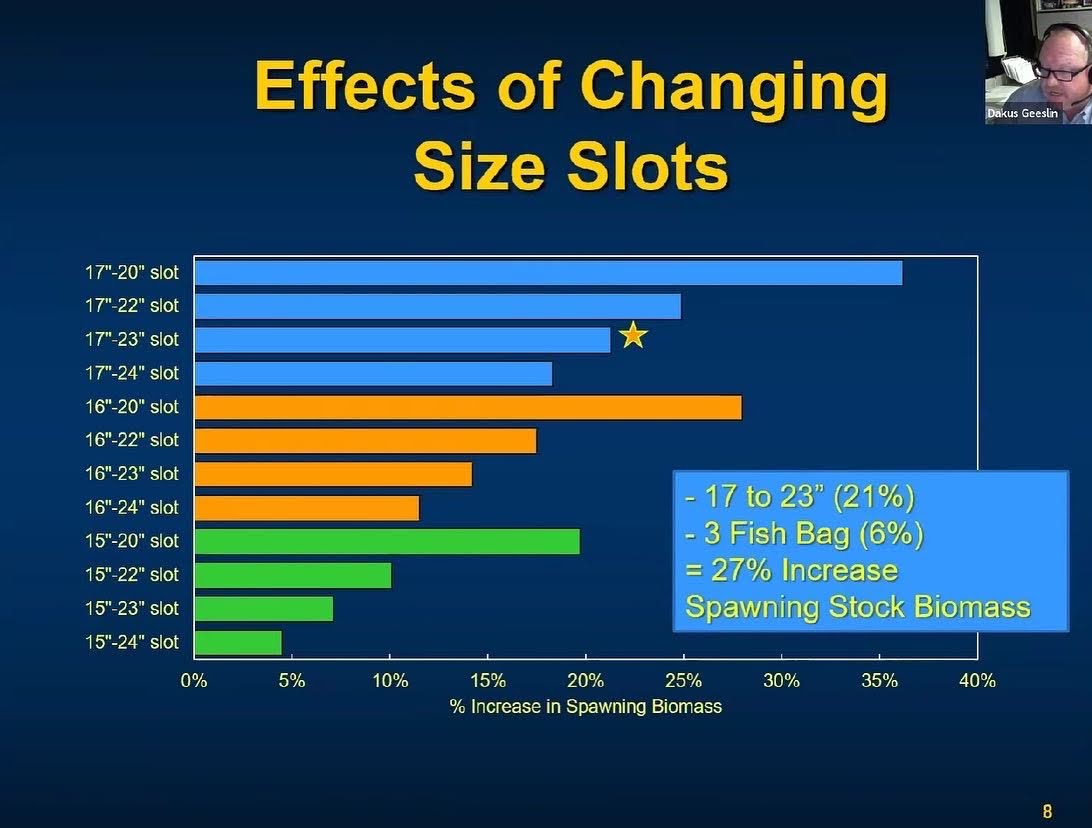
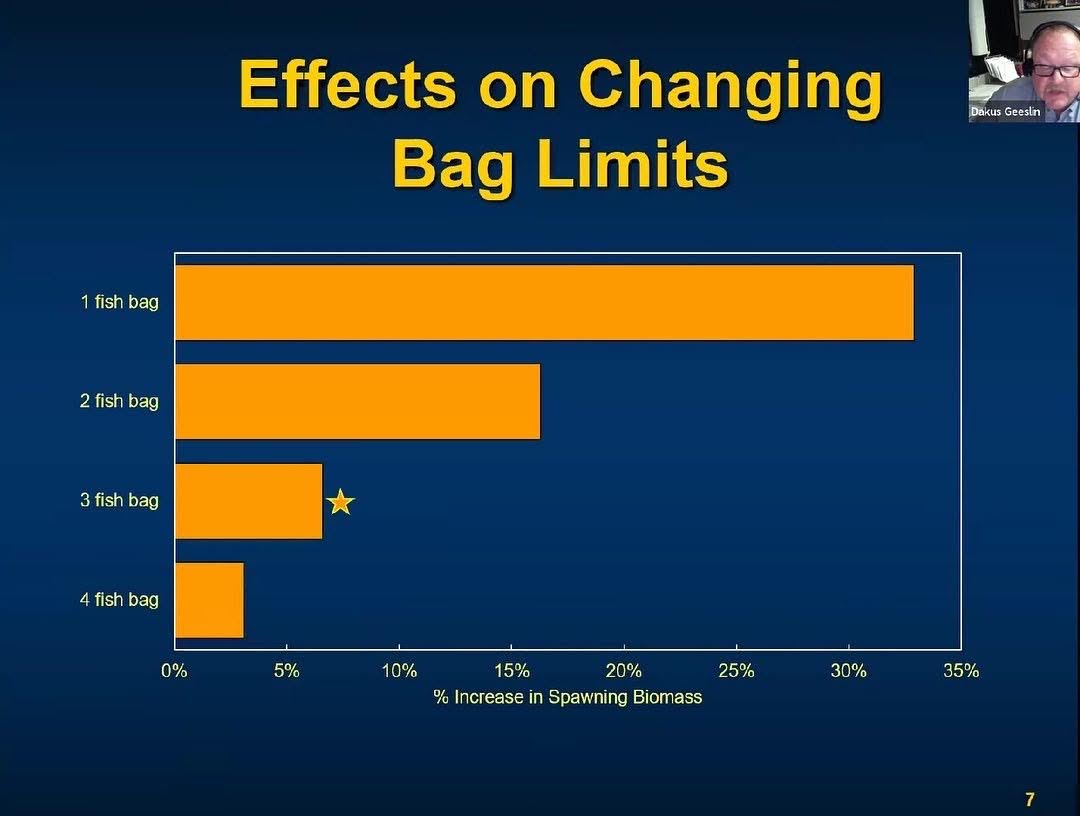
TPWD looked at multiple slot limit and bag limit combinations before deciding to propose what ultimately was adopted. The new three-fish bag limit will result in a 6% increase in what biologists call “biomass,” a fancy word for how many more trout will be estimated in the population as a result of the new regs.
The new 17- to 23-inch slot limit (with no over fish) will result in a 21% increase in trout biomass in the affected areas. Overall, that would be 27% more trout overall, TPWD estimates.
TPWD acknowledges that larger fish produce more eggs. However, they note the majority of the spawning biomass is in the 12- to 17-inch range. That would mean the largest number of reproductively mature fish is in that length size. The new regulations would ease pressure on that “cohort” of fish.
TPWD officials have noted that the 2021 freeze wasn’t on par with the major fish-killing freezes in 1983 and 1989 when parts of some bays actually froze and that, on average, it took two to three years for the catch rates of speckled trout to bounce back after those “benchmark events.” However, it should be noted there also were fewer fishing guides and less fishing pressure at that time across the entirety of Texas’ bay framework.
The Texas Parks & Wildlife Department’s hatcheries program has helped stock tens of millions of fish across the state, and after the historic freeze in 2021, the coastal program has come through in a big way. The coastal hatcheries system, including the CCA Marine Development Center in Corpus Christi, Sea Center Texas in Lake Jackson and the P.R. Bass Marine Hatchery in Palacios, produced about 3 million specks in 2020.
In 2021, the hatcheries produced about 10 million trout, TPWD officials noted. Of those fish, 2.4 million went into the Laguna Madre, 1.9 million went into Aransas Bay, 2.6 million into West Matagorda Bay, 1 million into East Matagorda Bay and 1.1 million into San Antonio Bay. While the overall survival rate of hatchery-reared trout remains relatively low, that many specks introduced into those bay systems affected negatively by the freeze certainly should aid in helping to restore the decline in the different populations.
In addition to trout, the hatchery system also produces redfish, which should continue to help provide a solid fishery for those heartier game fish. TPWD officials noted that they have looked into increased fishing pressure on redfish, but based on gillnet and harvest surveys, nothing was way off from the 10-year mean average, compared to the figures for trout. Coastal fisheries personnel did note that fishing pressure on any sought-after species is something they will continue to monitor.
















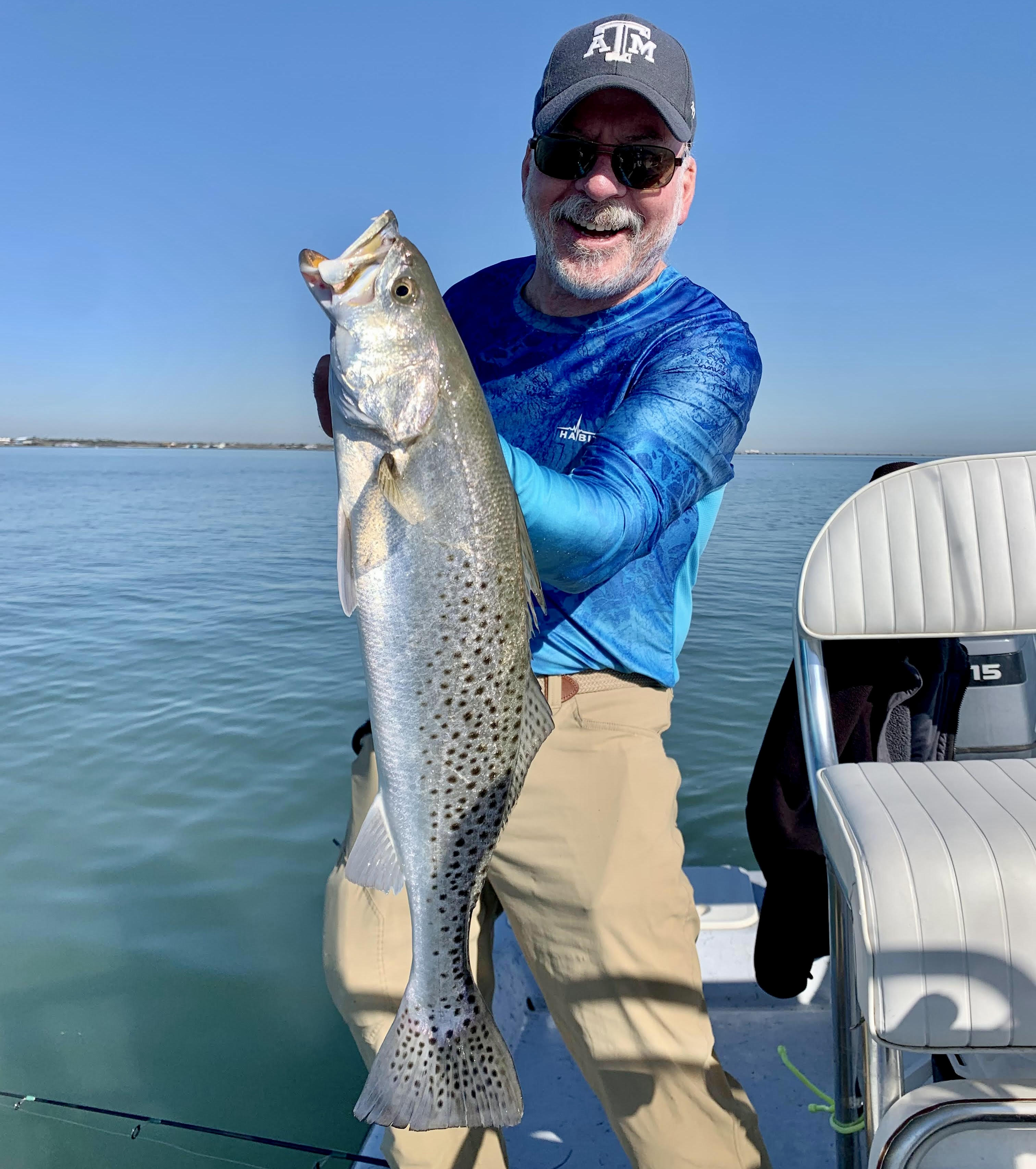



I have been a professional fishing guide on Galveston Bay for the past 22 years. Yes I have seen a drastic change in our fishery and especially speckled trout. Our bag limit on trout went from 10 to 5 per angler in 2017. After 5 years I can say that it has really help the trout population and overall heath of speckled trout.
I hope that with all the new and existing regulations, that we will continue to see an improvement in our trout population. I think if we all just do our little part, it will add up to helping all the species in our bay waters.